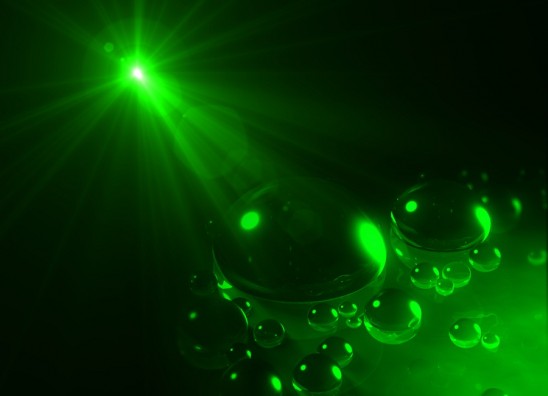August 12, 2013
By Gene Kruckemyer
When light falls on an object, it normally is pushed away. This is why, for instance, the dusty tails of comets are bent outward from the sun.
But demonstrating the idea of using light to attract an object has long been an unattainable goal of scientists – until now.
A team of researchers from the University of Central Florida and the National University of Singapore have shown that it is possible to pull microscopically small objects floating on a water surface in the opposite direction of the illuminating beam. Their study “Linear Momentum Increase and Negative Optical Forces at Dielectric Interface” was published this past weekend on the website of Nature Photonics, a peer-reviewed scientific journal.
“Because this new way to generate optically induced action is simple to implement and robust, it opens new avenues in biophotonic sensing and optical manipulation,” said Aristide Dogariu, professor of optics in the UCF College of Optics & Photonics. “For instance, these new types of forces can drive microflows without moving parts or any other additional mechanical or chemical preparations.”
In their research, the team discovered that forces acting against the flow of light can occur because of the natural amplification of momentum when light passes from one medium into another with a higher light-refractive index.
The pulling effect occurs, for example, when light travels from air into water. The scattering of the light causes “momentum conservation” resulting in the negative force that pulls the object backwards.
“This is an experimental demonstration of a new concept to achieve so-called ‘tractor beams.’ Particles can move indefinitely without having to continuously modify the light beam,” Dogariu said.
Common to many living systems, the environment and chemically engineered products, complex interfaces are created when active molecules or particles collect at the boundaries. “The flexibility of applying spatially distributed optical forces could lead to new means for macroscopic manipulation of such structures,” Dogariu said. The concept may be developed to use in medical, chemical and other fields to move or separate small targeted items (such as bacteria or other biological entities) because of the different ways they would scatter the light.
The team also included Dr. Sergey Sukhov, a senior research scientist in UCF’s College of Optics & Photonics, Veerachart Kajorndejnukul a UCF graduate student, and two scientists from National University of Singapore, Weiqiang Ding and Cheng-Wei Qiu.
The research was partially supported by the National Science Foundation and the Air Force Office of Scientific Research.













